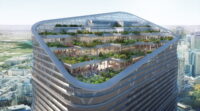- Home
- Articles
- Architectural Portfolio
- Architectral Presentation
- Inspirational Stories
- Architecture News
- Visualization
- BIM Industry
- Facade Design
- Parametric Design
- Career
- Landscape Architecture
- Construction
- Artificial Intelligence
- Sketching
- Design Softwares
- Diagrams
- Writing
- Architectural Tips
- Sustainability
- Courses
- Concept
- Technology
- History & Heritage
- Future of Architecture
- Guides & How-To
- Art & Culture
- Projects
- Interior Design
- Competitions
- Jobs
- Store
- Tools
- More
- Home
- Articles
- Architectural Portfolio
- Architectral Presentation
- Inspirational Stories
- Architecture News
- Visualization
- BIM Industry
- Facade Design
- Parametric Design
- Career
- Landscape Architecture
- Construction
- Artificial Intelligence
- Sketching
- Design Softwares
- Diagrams
- Writing
- Architectural Tips
- Sustainability
- Courses
- Concept
- Technology
- History & Heritage
- Future of Architecture
- Guides & How-To
- Art & Culture
- Projects
- Interior Design
- Competitions
- Jobs
- Store
- Tools
- More
Revolutionize Interior Design with Innovative Architectural Concepts

In today’s rapidly evolving work environment, the lines between personal and professional spaces are increasingly blurred. This shift demands innovative architectural concepts that not only enhance aesthetics but also improve functionality and comfort. By integrating thoughtful design elements, we can create interiors that foster collaboration, mobility, and employee satisfaction.
Architects play a pivotal role in this transformation. From selecting walls and windows to designing flexible workspaces, their expertise shapes environments that adapt to diverse needs. Investing in such designs not only boosts employee retention but also enhances overall performance. Let’s explore how modern architectural concepts are revolutionizing interior design and redefining our workspaces.

Table of Contents
ToggleExploring the Relationship Between Architecture and Interior Design
The Role of Architectural Concepts in Interior Design
Architectural concepts serve as the foundation of interior design. When designing a space, architects don’t just think about the structure; they consider how the space will be used and how it can best support its intended functions. These concepts guide the selection of materials, the layout of spaces, and the integration of technology, ensuring that the final design is both functional and aesthetically pleasing.
For example, open floor plans promote a sense of openness and collaboration in work environments. Similarly, the strategic use of natural light can enhance the ambiance and reduce the need for artificial lighting, contributing to energy efficiency. By integrating these architectural concepts, we create environments that are not only beautiful but also practical and sustainable.
How Architecture Influences Interior Space and Functionality
Architecture significantly impacts interior space and functionality. The layout and structure of a building dictate how spaces are organized and used. Effective architectural design considers factors such as traffic flow, accessibility, and ergonomics to create spaces that cater to the needs of their occupants.
For instance, in a modern office, flexible workspaces that include both private and collaborative areas allow employees to choose the environment that best suits their tasks. By incorporating features like movable partitions and modular furniture, we can create adaptable spaces that can be easily reconfigured as needs change.
Furthermore, architectural elements like windows and doors influence the distribution of light and air within a space, affecting comfort and productivity. By thoughtfully designing these elements, we can enhance the overall functionality and well-being of those who use the space.
Architectural concepts and interior design are deeply intertwined. By understanding and leveraging the relationship between them, we can create spaces that are not only visually appealing but also tailored to meet the specific needs and preferences of their users.
Key Architectural Concepts That Enhance Interior Design
The Importance of Balance and Harmony
Achieving balance and harmony in interior design hinges on the thoughtful distribution of visual weight within a space. Architects strive to create environments where elements complement one another, avoiding any feeling of chaos. The balance can be symmetrical, where objects mirror each other, or asymmetrical, which relies on differing elements that still achieve overall cohesion. Balance and harmony guide the selection of furniture, lighting, and materials, ensuring that every component contributes to a unified aesthetic.
Utilizing Focal Points to Define Spaces
Focal points serve as the centerpiece of a design, drawing attention and establishing clear zones within open plans. These focal points can range from architectural elements like fireplaces and arched doorways to standout pieces of furniture or art. By strategically placing focal points, architects ensure that every area has a distinct purpose. This enhances functionality, helping occupants naturally navigate through the space. In school renovations, focal points such as a vibrant reading nook or interactive wall can greatly improve student engagement.
Incorporating Rhythm and Flow in Design
Rhythm in design creates a sense of movement, guiding the eyes through a space in a deliberate manner. Architects achieve rhythm by repeating elements like patterns, colors, and textures. This repetition can vary, providing subtle cues that lead from one area to another, enhancing navigation and usability. Flow complements rhythm, ensuring transitions between spaces feel natural and uninterrupted. Smooth transitions, such as using consistent flooring materials or gradual color shifts, contribute to a harmonious environment. Incorporating rhythm and flow is particularly crucial in creating adaptable and inclusive workspaces.
These key architectural concepts—balance and harmony, focal points, rhythm, and flow—form the backbone of successful interior design, enhancing both aesthetics and functionality.

Integrating Form and Function in Interior Design
Defining Functional Requirements for Different Spaces
Architects and interior designers must define functional requirements for each space to ensure it meets occupants’ needs. Workspaces should support various activities such as meetings, individual work, and collaborative tasks. To achieve this, designate areas for each function and use flexible furniture (e.g., modular desks, movable partitions) to adapt to changing needs. Include quiet zones for focused work and open areas for team interactions. In residential spaces, consider the daily activities of the occupants, providing functional layouts for cooking, dining, and relaxation.
Schools must cater to diverse educational needs, blending traditional classroom setups with modern learning environments. Integrate storage solutions, adaptable seating, and advanced technology to support both students and educators. Functional design in healthcare settings involves optimizing patient flow, ensuring sanitary conditions, and providing comfortable spaces for treatment and recovery.
The Significance of Unique Details in Design Customization
Customizing interior design with unique details enhances both function and aesthetics. Architectural elements such as custom-built shelving, integrated lighting, and specialized materials (e.g., acoustic panels, eco-friendly options) can vastly improve usability and appeal. Use bespoke cabinetry to maximize storage and maintain a clean, clutter-free environment.
In commercial spaces, incorporate unique corporate branding elements (e.g., logos, color schemes) to reinforce company identity. Custom furniture and artwork can reflect the ethos of the organization, creating a cohesive and immersive experience for employees and visitors.
Residential interiors benefit from tailored designs that reflect personal tastes and lifestyles. For example, custom kitchen islands with built-in appliances offer both practicality and aesthetic richness. Unique architectural features such as vaulted ceilings, exposed beams, and accent walls can transform ordinary spaces into extraordinary ones, adding character and enhancing the overall ambiance.
By seamlessly blending form and function through thoughtful customization, architects and interior designers can create environments that are not only beautiful but also highly efficient and tailored to the needs of their users.

The Collaborative Process in Design Development
How Architects and Interior Designers Work Together
Architects and interior designers collaborate by blending their expertise to create cohesive spaces. While architects focus on the structural integrity and spatial configuration, interior designers concentrate on optimizing the interior environment. This partnership begins in the early stages of the project and continues through to completion. Meetings, brainstorming sessions, and regular updates ensure that both perspectives are integrated seamlessly into the design.
Effective collaboration requires clear communication and shared goals. Architects and interior designers must align on key aspects such as layout, materials, lighting, and acoustics. For example, architects might suggest structural changes to enhance natural light, while interior designers select finishes that complement this adjustment. By working together, we can balance aesthetics and functionality, creating spaces that are both beautiful and practical.
The Impact of Shared Vision on Final Outcomes
A shared vision between architects and interior designers significantly impacts the project’s success. When both parties understand and agree on the project’s core objectives, the result is a harmonious and well-executed design. This unified vision is achieved through detailed discussions with clients, where we gather insights into their preferences, requirements, and aspirations.
With a shared vision, the design process becomes more streamlined. For instance, in school renovations, architects and interior designers must ensure that classrooms are conducive to modern teaching methods. By incorporating flexible furniture, effective lighting, and advanced technology, we create optimal learning environments. Similarly, in corporate settings, a shared vision helps in designing workspaces that promote productivity, collaboration, and employee well-being.
Shared vision leads to a cohesive design that meets user needs and enhances the overall experience within the space.

Conclusion
Integrating innovative architectural concepts into interior design significantly enhances overall space quality. This integration isn’t limited to aesthetic elements; it also positively impacts functionality and user satisfaction. A well-planned architectural concept can transform an ordinary space into a cohesive and dynamic environment.
Collaboration between architects and interior designers is essential to achieving this transformation. Architects lay the groundwork with structural designs, while interior designers optimize these designs to meet user needs. By sharing a common vision and clear communication, both professions can ensure that the final outcome is both visually appealing and functional.
Innovative concepts like open floor plans and adaptive reuse of spaces are examples of how architectural strategies improve interior environments. Open floor plans promote flexibility and interaction, enhancing collaborative work environments. Adaptive reuse breathes new life into older buildings, merging historical elements with modern needs.
Codes and regulations also play a critical role in the successful integration of architectural and interior design concepts. For instance, in California, only certified individuals can legally label themselves as interior designers. This ensures that professionals adhere to standards that protect public health, safety, and welfare.
Achieving balance in interior spaces involves more than color schemes and furnishings; it’s about creating environments that support activities and enhance well-being. For instance, incorporating natural light and ergonomic furniture can significantly uplift the mood and productivity of space users.
A successful interior design project hinges on strong collaboration, innovative concepts, regulatory adherence, and user-centered design. By considering these factors, we can create spaces that are not only beautiful but also functional and accommodating to the needs of their users.
Submit your architectural projects
Follow these steps for submission your project. Submission FormLatest Posts
New-Year Decoration Reset for Homes: An Architectural Approach to Clarity
The New-Year decoration reset is more than a seasonal refresh—it is an...
Latest Interior Design Styles Sweeping the USA in 2026
Interior design trends in the USA for 2026 reflect a shift toward...
9 Innovative Concepts Shaping Interior Design in USA
Interior design in the United States is shifting toward spaces that prioritize...
Interior Design Tips for Creating Timeless and Functional Living Spaces
There’s something magical about walking into a home that just works. Not...












Leave a comment